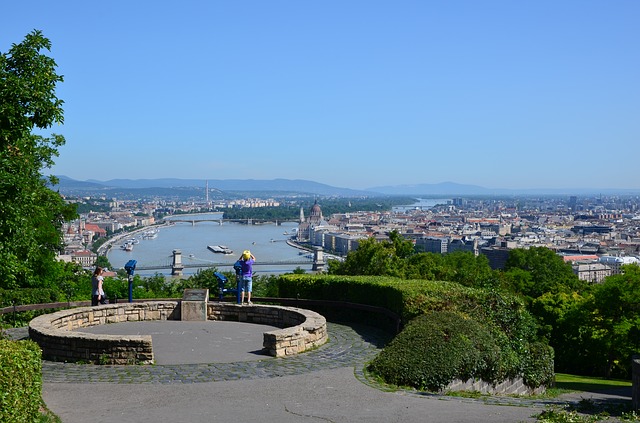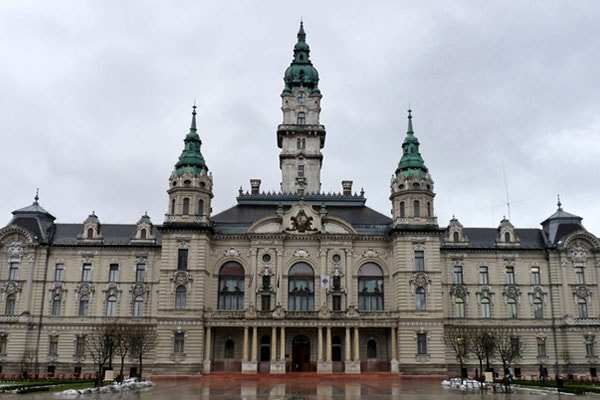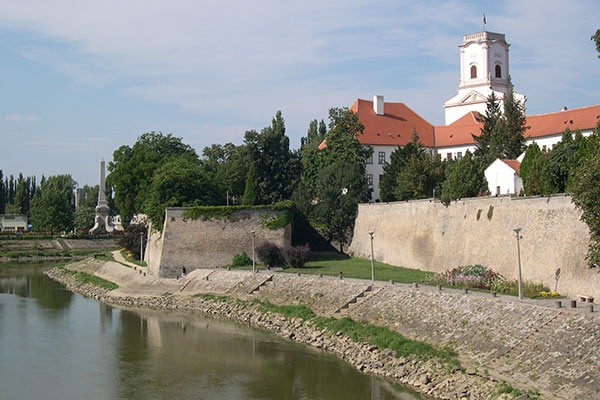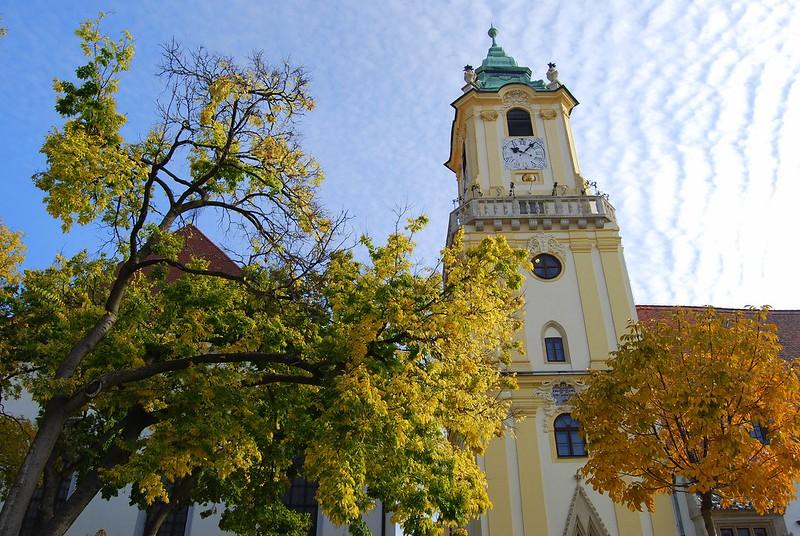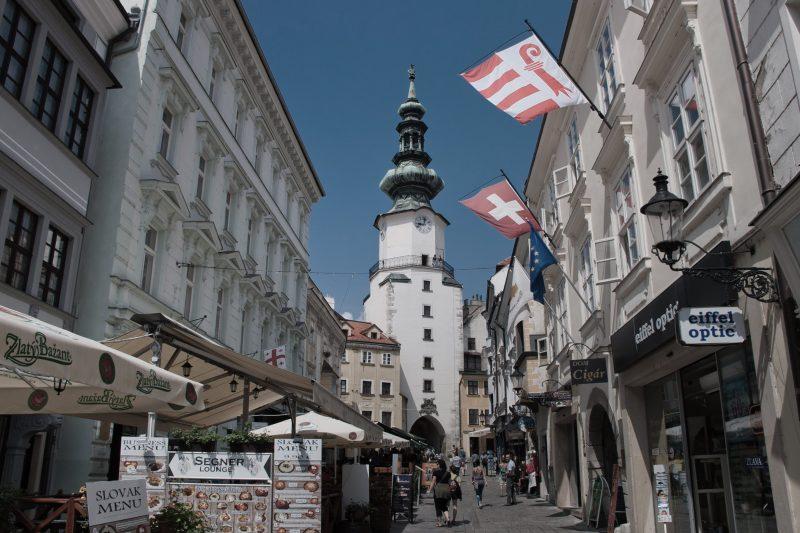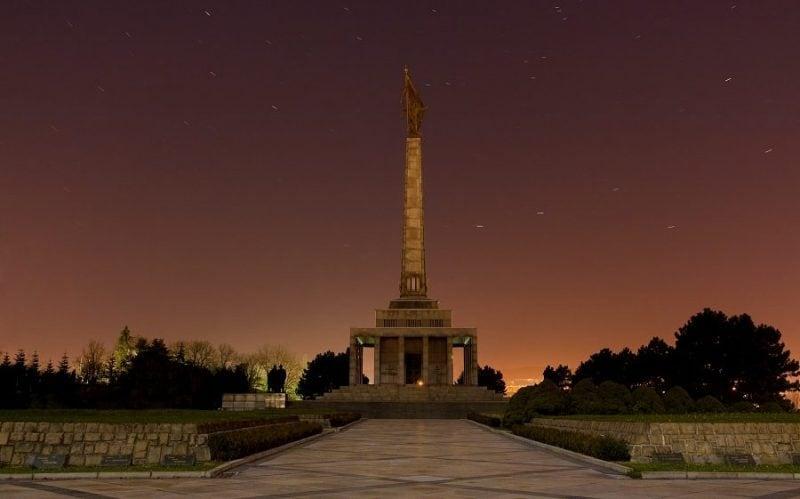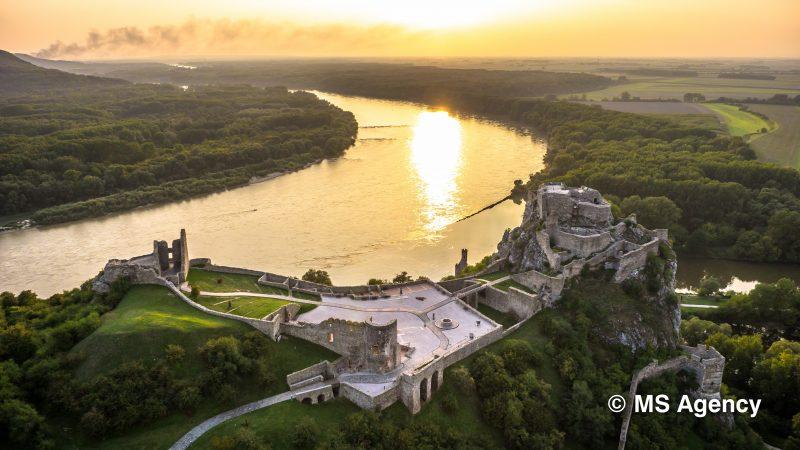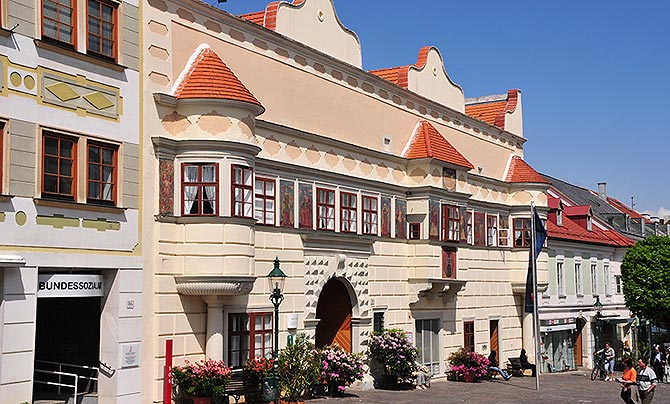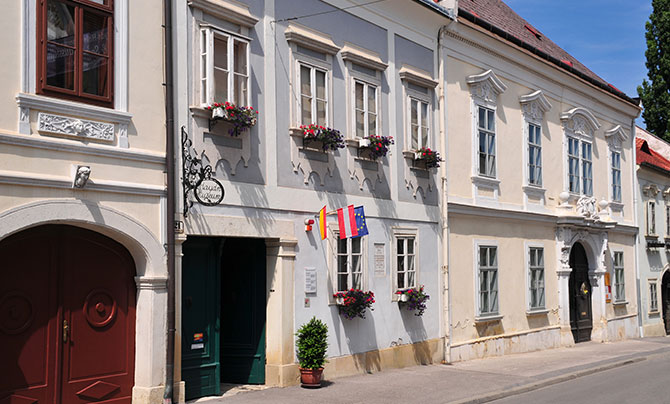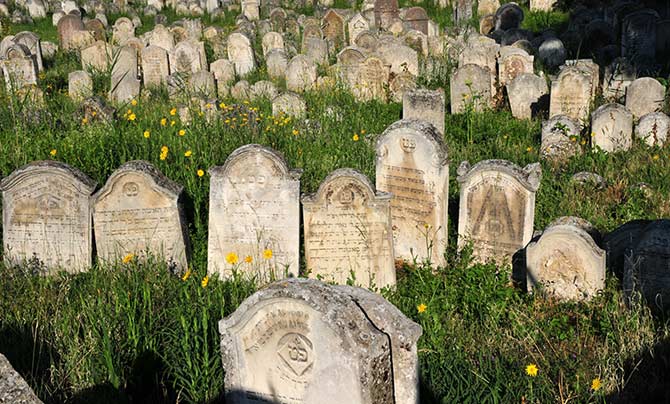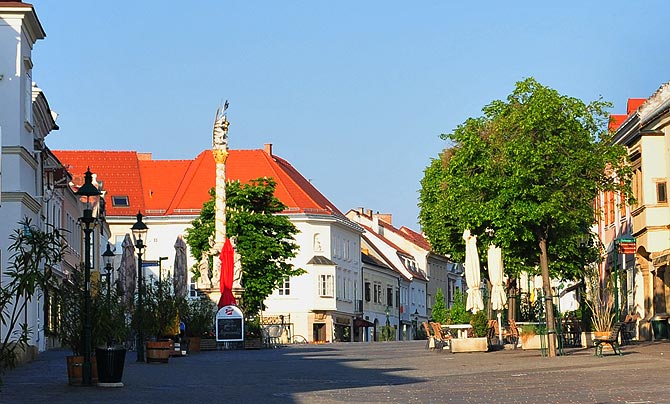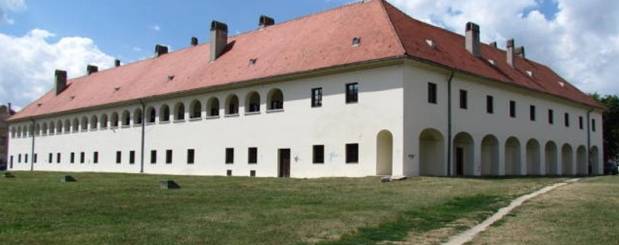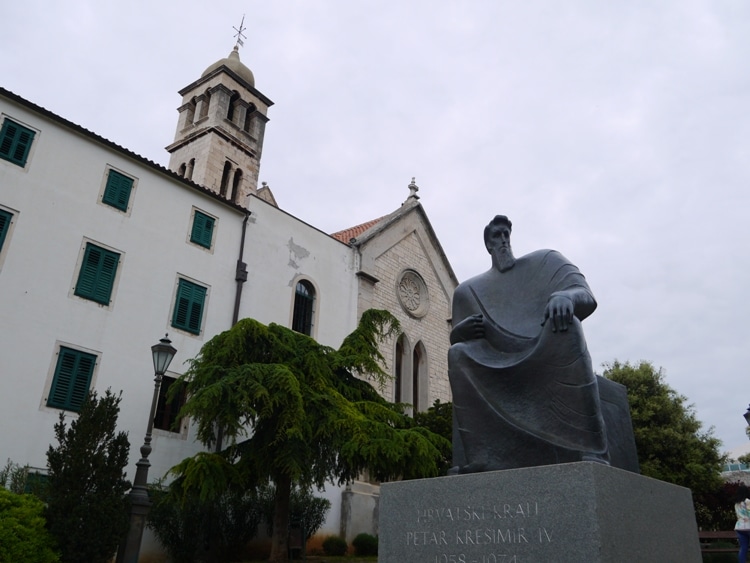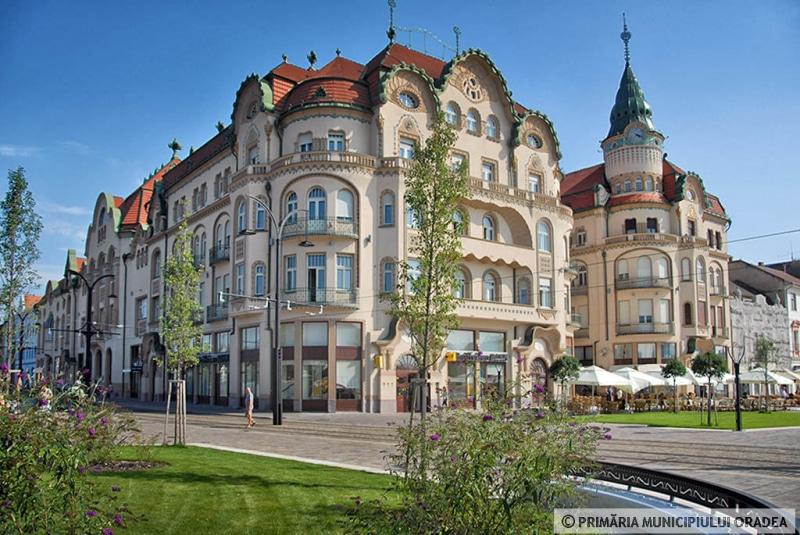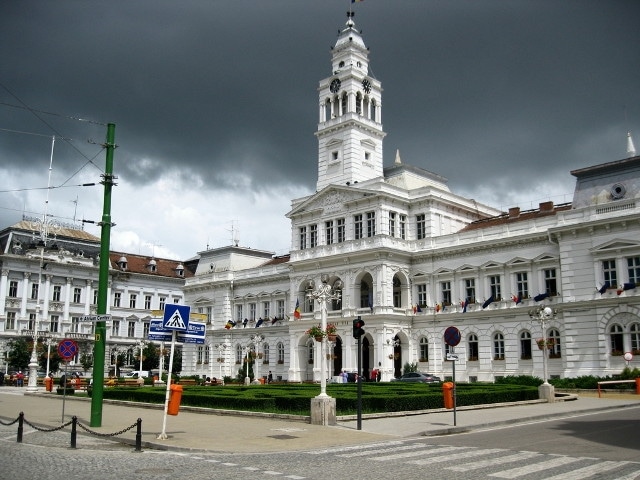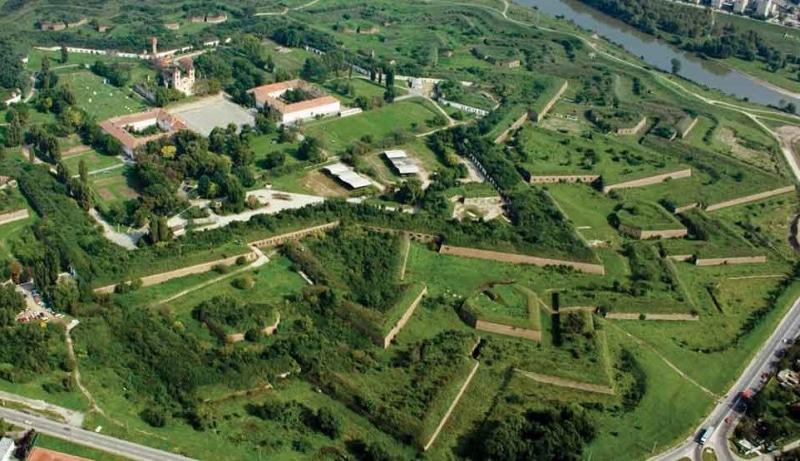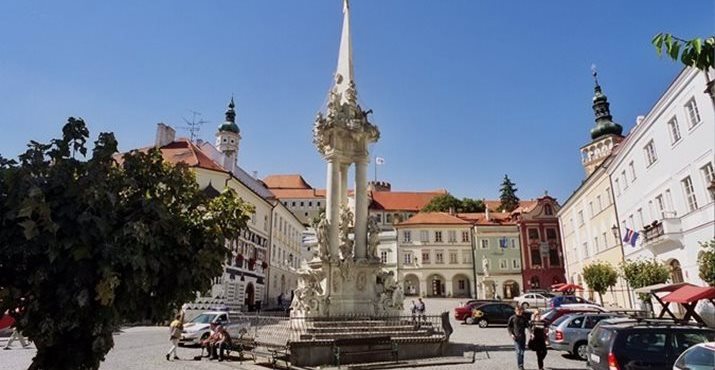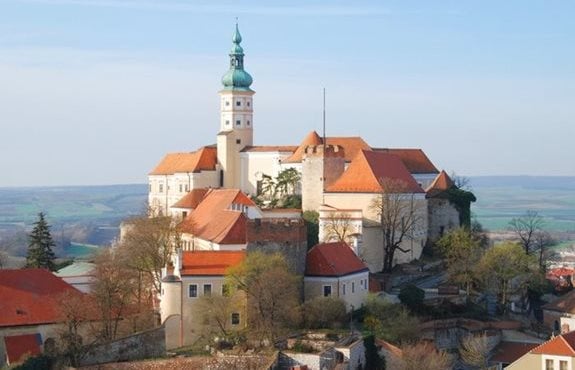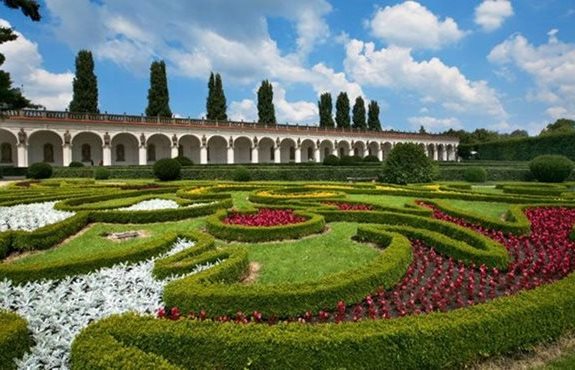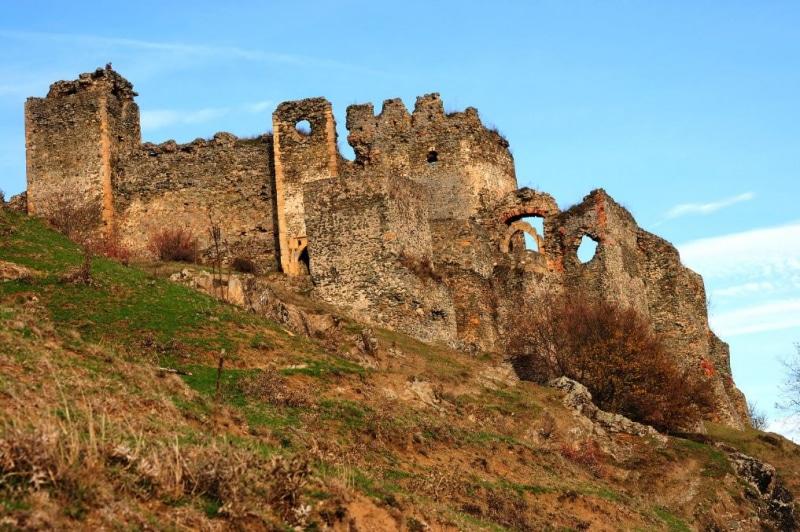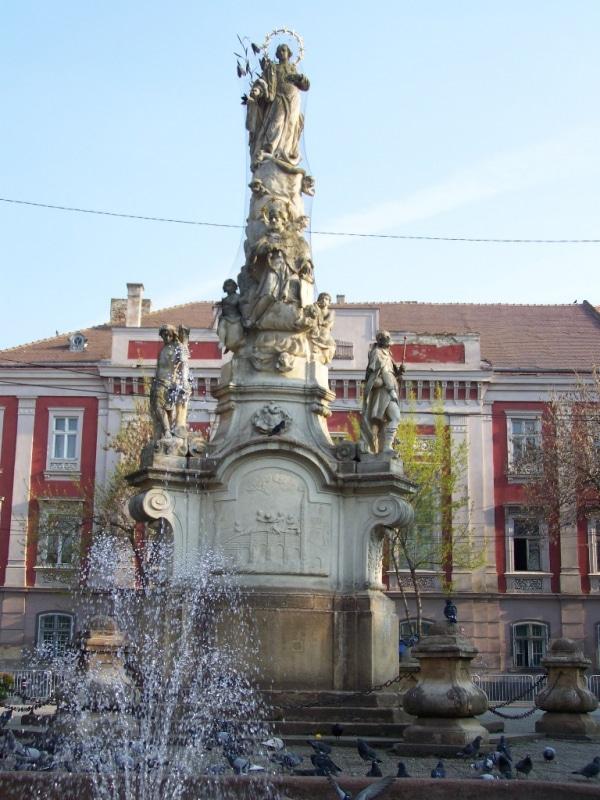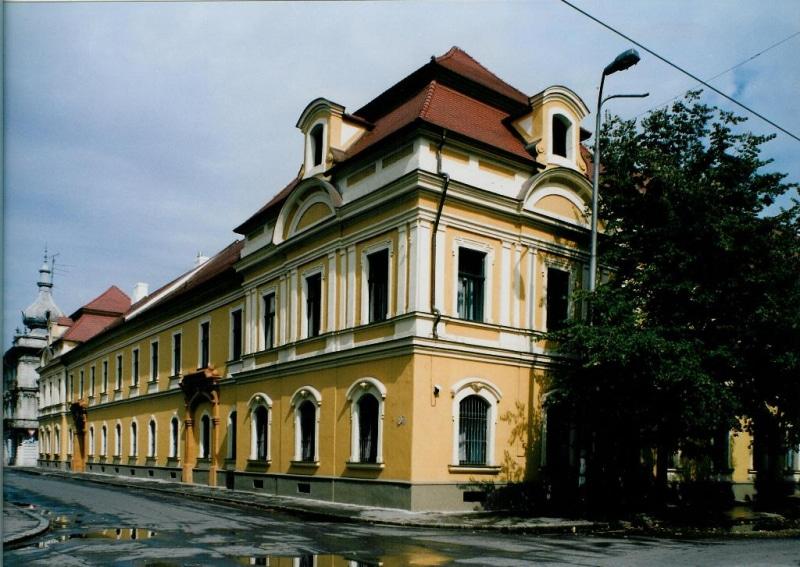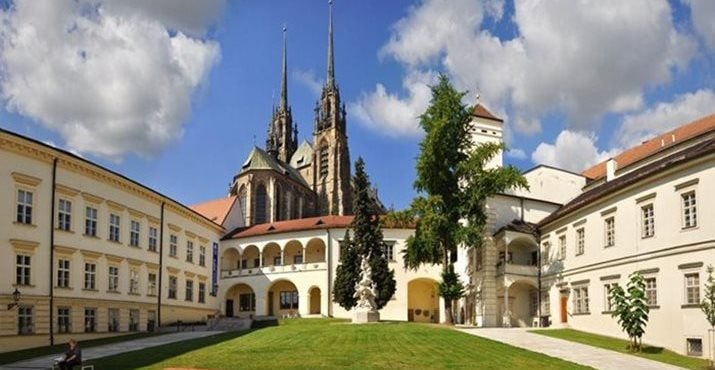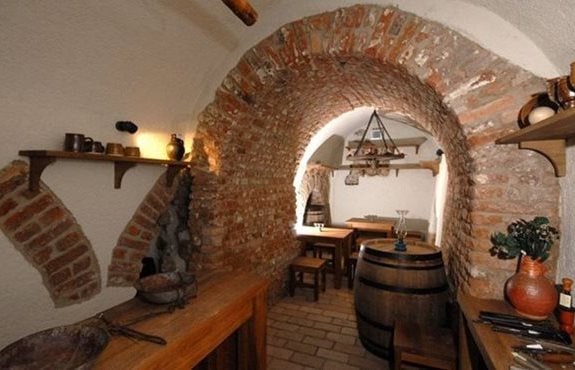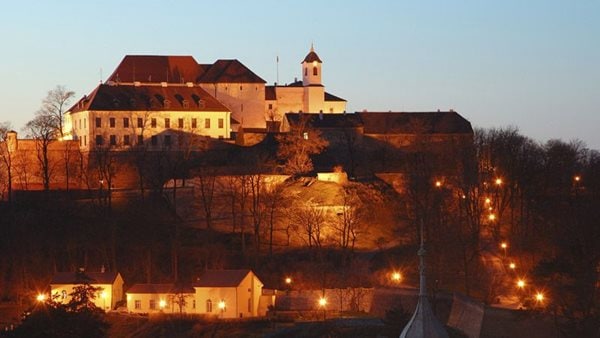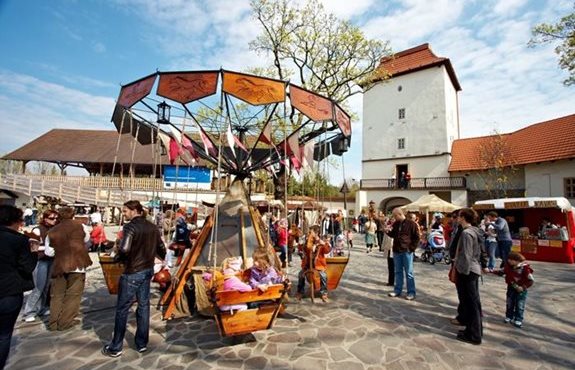HistoricalSites, Budapest
Removed from Unnamed collection
Gellert Hill
The hill was named after bishop Gellért (Gerard), who was thrown to death from the hill by pagans in the fight against Christianity in 1046. His statue, which faces Elizabeth Bridge (Erzsébet hid) and holds a cross, can be seen from many parts of Pest. At the top of the hill is the Citadel (Citadella), a fortress built by the Habsburgs after defeating Hungary's War of Independence in 1849. It was a prime, strategic site for shelling both Buda and Pest in the event of a future rebellion.
In the 18th century, the slopes of Gellért Hill were covered with vineyards. The Tabán district at the foot of the hill was an important center of winemaking in Buda. Gellért Hill was a strategic military position in the Second World War as well as the 1956 Hungarian Revolution, when Soviet tanks bombarded the city from here. Budapest's Statue of Liberty stands on top of the hill, and she can be seen from all parts of the city. Liberty was erected during the Communist era, commemorating the liberation from Nazi rule.
Now a residential area, private homes and embassies line the streets winding up the hill. Since 1987, Gellért Hill has been listed as a world heritage site, as part of "the Banks of the Danube" area. The famous Hotel Gellért and the Gellért Baths can be found in Gellért Square at the foot of the hill. http://visitbudapest.travel/guide/budapest-attractions/gellert-hill/
Map
Explore more places related to this search:
Removed from Unnamed collection
Kecskemet Town Hall
The neighbouring building is the Town Hall built by the plans of Ödön Lechner and Gyula Pártos.
The 150-year-old building of the City Hall was demolished in 1892. József Katona, the writer of our national drama worked there for 10 years. He collapsed and died at the entrance. The cracked stone monument set up at the scene of his heart attack in front of the building reminds us of this tragic event. The notice on this monument says: „The heart of the son of Kecskemét broke here.” In 1895 the offices moved into the building of which area is 5534 m2 and has 174 rooms. On the 8th July, 1911 there was a huge earthquake in the city which did not spare the City Hall either. Its collapsed chimneys and cracked walls were soon reconstructed under the direction of Ödön Lechner. The style of the building with its nearly rectangle-shaped ground-plan mixes the forms of the French Renaissance architecture and the elements of our popular art. The Ceremonial Hall is the venue of the General Assembly meetings of the city, national and international conferences, wedding ceremonies and ceremonial receptions.
The period furniture of the Ceremonial Hall is handicraft work. The wooden furniture and the printed leather backed chairs were made in Szeged according to the design of Lechner and Pártos. The beautiful and richly coloured glass windows were made in the workshop of the famous Miksa Róth. The decorative wall-painting was made by Adolf Götz, the wall-candlesticks and the chandelier were made by Sándor Árkay, Imperial and Royal locksmith upon the basis of the designs of Szilárd Várady.
The paintings were made by the famous Hungarian painter Bertalan Székely. These paintings show some periods of the Hungarian history embracing one thousand years. https://www.budapest.com/hungary/kecskemet/sights/town_hall.en.html
Map
Removed from Unnamed collection
Gyor Old Town Hall
Above the beautiful bay window of the Baroque building the coat of arms of Győr can be seen; the city archives can be found in this house. https://www.budapest.com/cities_in_hungary/gyor/sights/old_town_hall.en.html
Map
Removed from Unnamed collection
Bishops Castle and Episcopal Palace
The traces of Roman building activities have been found in the foundation of the castle. Its oldest parts are the lower section of the tower castle, the so-called runaway corridor dating from the XIV. century, as well as the adjacent cross-vaulted hall. https://www.budapest.com/cities_in_hungary/gyor/sights/bishops_castle_and_episcopal_palace.en.html
Map
Removed from Unnamed collection
Primatial Palace
The Primate’s Palace is one of the most beautiful classicist buildings in Slovakia. Portraits of Hungarian rulers are exhibited in the picture gallery. An impressive part of the gallery is a collection of six tapestries found in the reconstruction of the palace. https://www.visitbratislava.com/places/primatial-palace/
Map
Removed from Unnamed collection
Bratislava Old Town Hall
The history of the Old Town Hall dates back to the beginnings of the mediaeval town in the 13th century. It was then that the original Romanesque house of Mayor Jakub became the property of the city. Over the course of time Unger’s House and Pawer’s House were annexed to it.
The most complete element in the neo-Gothic reconstruction is the chapel of St Ladislav, with its unique wall paintings from the 15th century. In 1581 a renaissance arcade was added. The building normally houses the Bratislava City Museum, the oldest in the city (1868). When open, the museum features an exhibition of the feudal justice system, as well as the remarkable interior of the town hall building and original furnishings from the municipal court. In summer, cultural programmes are held in the beautiful renaissance courtyard and concerts are held in the tower. https://www.visitbratislava.com/places/old-town-hall/
Map
Removed from Unnamed collection
Michael's Gate
The bulbous yet elegant copper roof of Michael’s Gate is one of the symbols of Bratislava.
The roof of the original gothic tower, built in the mid 14th century, was modified between 1753 and 1758 to give it its current, baroque style. The 51 meters tall tower has seven floors, and the superb view of the old town from the upper terrace of the tower is one of Bratislava’s top visitor experiences. https://www.visitbratislava.com/places/michaels-gate/
Map
Removed from Unnamed collection
Bratislava Castle
The former seat of the rulers, today the symbol of Bratislava and the seat of the Museum of History. There is a wonderful view of the city and the neighbouring countries from its 47-metre-high crown tower in which royal coronation jewels used to be deposited. https://www.visitbratislava.com/places/bratislava-castle/
Map
Removed from Unnamed collection
Slavin
The gigantic Slavín war memorial is visible from much of the city. On a hill overlooking the castle, it commemorates the city’s liberation by the Red Army in April 1945. https://www.visitbratislava.com/places/slavin/
Map
Removed from Unnamed collection
Devin Castle
The oldest traces of Slavic settlement date from the 8th century, and in the 9th century a fortress from the period of the Great Moravian Empire is believed to have stood here, linked to ruler Prince Rastislav. https://www.visitbratislava.com/places/devin-castle/
Map
Removed from Unnamed collection
Eisenstadt City Hall
The structural fabric of the town hall dates back to 1560 and was changed after the city had been elevated to a royal free-trade zone in 1648.
The architectural basis is thought to go back to early renaissance. The diamond-shaped ashlar of the portal points to this era, too.
The one-storey building with a broad front featuring two round oriels on the sides and a rectangular oriel in the centre has been refurbished during the baroque; a massive attic has been built on top of it during the same period. The murals discovered in 1926 probably also go back to the early renaissance period and have been adapted to fit the baroque tastes later on. In 1949 Rudolf Holzinger repainted them by closely sticking to old patterns. He also completed the missing pictures. https://eisenstadt-leithaland.at/city-hall.html
Map
Removed from Unnamed collection
Haydn House Eisenstadt
When he got promoted to conductor in 1766, Haydn bought this house and lived there with his wife Aloisia Keller until 1778. Haydn and Eisenstadt are inseparable. From 1761 on, Haydn worked as conductor for the Esterházy court for more than 40 years. Five years after his commission to the Esterházy court, he bought the baroque house situated in what is now called 21 Haydngasse. He lived there for 12 years. Numerous furniture items and original instruments make this collection a true feast for all senses. https://www.eisenstadt-leithaland.at/en/sightseeing/sightseeing/haydn-house-eisenstadt
Map
Removed from Unnamed collection
Esterhazy Palace
Esterházy Palace in Eisenstadt is one of the most beautiful baroque castles in Austria and gives an impressive insight into the former glittering life at the court of the Princes Esterházy.
With the authentic ambience and the excellent acoustics of the Haydn Hall, Esterházy Palace is still the center of cultural events: here concerts are given, festivals celebrated and glamorous exhibitions shown.
An exciting counterpoint is the former stables opposite the castle. Together they form the Schlossquartier Eisenstadt, where contemporary and historical, music and art, culinary and wine meet each other in a unique way. https://esterhazy.at/de/schlossesterhazy/index.do
Map
Removed from Unnamed collection
Jewish Museum Eisenstadt
In 1972 the Austrian Jewish Museum in Eisenstadt was established as Austria’s very first Jewish museum after 1945. It is located in the town’s former Jewish district, near Palace Esterházy, in Palais Samson Wertheimer.
In the course of your tour, you can visit not only the museum exhibitions, but also the synagogue belonging to the Palais Wertheimer, as well as both Jewish cemeteries, on a roundabout walk through the ancient Judengasse.
The small synagogue to the former Hungarian state rabbi Samson Wertheimer (1658-1724) is the gem of the building and the museum. It numbers among the very few synagogues in the German speaking area which was not destroyed in the so-called Reichskristallnacht in November 1938 or during the period following. https://eisenstadt-leithaland.at/jewish-museum.html
Map
Removed from Unnamed collection
Jewish Cemetery and Jewish Quarter
The old Jewish Cemetery had been installed in the 17th century near the Jewish Quarter.
Due to place restrictions, the new cemetery was set up near the old one.
During the Nazi-occupation it was partly destroyed and tombstones had been used to erect tank barriers all around the city.
After 1945 both cemeteries were renovated and the tombstones were put back into place. https://eisenstadt-leithaland.at/jewish-cemetry.html
Map
Removed from Unnamed collection
Haydn Mausoleum
The Haydn Mausoleum is located right under the north tower. It is the famous composer's dignified and evocative place of burial.
Thousands of music lovers from all corners of the globe visit the mausoleum every year.
Joseph Haydn (1732-1809) had been employed with the Esterházy family for more than 40 years. After his death he was first buried in Vienna. In 1820 his remains were transferred to Eisenstadt and put into their final resting place, the mausoleum, in 1954. https://www.eisenstadt-leithaland.at/en/sightseeing/sightseeing/haydn-mausoleum
Map
Removed from Unnamed collection
Purgly Castle
The Purgly Castle is a historic monument located in Şofronea, Arad county.
Based on documents is believed the castle construction date would be around 1789. However, the first documentary mention is in 1889, the building appears in a document that mentions an exchange of land. Baron Janos Purgly is one that has transformed the old castle giving her current appearance. http://www.uvisitromania.com/tourist-attractions/arad/purgly-castle-id547
Map
Removed from Unnamed collection
Plague Column
Column in honour of the Holy Trinity and the crowned queen of heavens, Mary. The Plague Column was erected in 1713 by order of the "Royal Town of Eisenstadt". It was meant to serve as plea to God to free the city from the plague.
On the pedestal there are representations of Saint Rochus, Sebastian, Kajetan, John of Nepomuk and Saint Rosalie. Right above them is a cartouche featuring the coat of arms of the city.
At the feet of Saint Francis there is a plaque with rolled up ends on both sides. On the slender, Corinthian column wrapped with bay leave twigs there are: God the Father and Jesus, as well as the coronation of Mary, above them all hovers the Holy Spirit. https://eisenstadt-leithaland.at/plague-column.html
Map
Removed from Unnamed collection
Croatian state archives in Osijek
Croatia State Archives in Osijek is a public institution founded by the Republic of Croatia and the territorial jurisdiction now extends to the area of Osijek-Baranja County and is one of 18 regional archives. http://osijek-culture.eu/en_UK/cultural-locations-and-facilities/cultural-facilities/croatian-state-archives-in-osijek
Map
Removed from Unnamed collection
Statue Of King Petar Kresimir IV
Located Near the old Hotel Krka you can find a statue of Croatia’s King Petar Kresimir IV. https://www.renegadetravels.com/9-things-to-do-in-sibenik-croatia/
Map
Removed from Unnamed collection
Vulturul Negru Palace
THE BLACK EAGLE COMPLEX is probably the most monumental architectural accomplishment in Oradea and in Transylvania, as far as the Secession building style is concerned. The contest to build this architectural complex was won by architects Komor Marcell and Jakab Dezső. http://oradea.travel/en/?p=1913
Map
Removed from Unnamed collection
The Administrative Palace
The Administrative Palace of Arad is a building built between 1872-1875, which today houses the Arad City Hall. Architectural gem, shaped in "U", with 90 rooms, a true "Palazzo del Municipio", the building reflects the possibilities and also the willingness of citizens to keep up with European modernization. http://www.uvisitromania.com/tourist-attractions/arad/the-administrative-palace-id533
Map
Removed from Unnamed collection
Fortress of Arad
The Fortress of Arad is a solid fortification system which was built in the 18th century at the orders of, and with the funding from, the Habsburg Empress, Maria Theresa. The cost to complete and erect the fortress reached 3 million Gulden (the currency used by the Habsburg Monarchy at the time). The fortress was built as an inner fortification system to protect the outer region of the Habsburg empire from conflicts in the area.
The main conflicts at the time were the ongoing wars between the Habsburgs and the Turkish Ottomans. The location for the fortress was chosen strategically to be at the crossroads of two very important trade routes of the day. It lies in the middle of the trade routes that led from the West to the Transylvania Region, and from the North, Oradea, and Satu Mare, to Timisoara, and down to the Danube waterway. http://roamingromania.com/fortress-of-arad/
Map
Removed from Unnamed collection
Mikulov Historic Market Square
The great fire of the original wooden houses in 1584 gave rise to Mikulov square in its present form. Part of the square, which is also the entrance to Mikulov Castle, is formed by houses with a Renaissance core and picturesque arcades.
Probably the most interesting of the Renaissance buildings is the bourgeois Knights’ House (dům U Rytířů), which was created after the rebuilding of several Gothic buildings in the second half of the 16th century. At first glance, you can not overlook it on the square due to its sgraffito decoration with biblical and ancient scenes covering two-thirds of the house. The painting draws attention to the fact that it was originally a two-story house. Another feature of the square is the statue of the Holy Trinity, in addition to showing the Trinity it also displays angels that symbolize faith, hope and love. The column is complemented by statues of St. John of Nepomuk, St. Francis Xavier and Charles Borromeo, who were supposed to protect the inhabitants of the city from the plague. The Plague Column was built during the reign of the Dietrichsteins in 1724. http://www.czechtourism.com/a/mikulov-historic-market-square/
Map
Removed from Unnamed collection
Mikulov Castle
One of the most picturesque castles in Moravia. The silhouette of this monumental castle in South Moravia is visible from afar. In its time it has played host to a number of important personalities, such as French Emperor Napoleon Bonaparte. http://www.czechtourism.com/c/mikulov-castle/
Map
Removed from Unnamed collection
Kromeriz Gardens
During the summer, Kroměříž is reminiscent of the Garden of Eden. The local gardens, which are included in the UNESCO world heritage list, represent a perfect symbiosis of light, plants, water, art and architecture. The Castle and Gardens are some of the most beautiful in Europe. http://www.czechtourism.com/c/kromeriz-unesco-gardens/
Map
Removed from Unnamed collection
Soimos Citadel
The Citadel of Soimos was built after the first invasion of the Tatars and documented since 1278. Soimos Citadel is on the list of historical monuments.
From 1278 until 1509, the city was ruled by Ladislau Kan II and Iancu of Hunedoara.
In 1509 the citadel and the domain become the property of Gheorghe Hohenzollern of Brandenburg. It was besieged in 1514 by Romanian and Hungarian rebels, led by Gheorghe Doja. After a brief resistance, the garrison of citadel led by Prince of Ciuci is an uprising against people of Gheorghe Hohenzollern and joins the rebels.
Turks occupied the citadel in 1552, after repeated sieges, and in 1595 was recaptured by György Borbély - Captain of Stephen Bathory - reaching into custody rulers of Transylvania.
In 1599-1600 pass under the rule of Michael the Brave (Mihai Viteazul). The citadel was finally liberated from Turkish domination in 1688. http://www.uvisitromania.com/tourist-attractions/arad/soimos-citadel-id535
Map
Removed from Unnamed collection
St. Mary and St. Nepomuk Monument
The monument has two names – both used: “St. Mary monument” and “St. Nepomuk monument". Both are (and were) correct, but could cause confusion: there was another “Mary”, quite famous, and it is in the namesake square from Iosefin, and there is also another Nepomuk near the Millennium Church in Fabric. http://www.timisoara-info.ro/en/sightseeing/historical-quarters/cetate/tours/230-monumentul-sfintei-maria.html
Map
Removed from Unnamed collection
Libertatii Square
Libertăţii Square is undoubtedly the oldest of the Timişoara squares. Libertăţii Square’s location is also the site of the original nucleus from which Timişoara’s evolution started, the first place where people settled and lived continuously in the hearth of today’s city. http://www.timisoara-info.ro/en/sightseeing/historical-quarters/cetate/tours/250-piata-libertatii.html
Map
Removed from Unnamed collection
The Roman-Catholic Episcopacy Palace
The Roman-Catholic Episcopacy Palace is one of the most representative Baroque buildings in Timişoara. http://www.timisoara-info.ro/en/sightseeing/historical-quarters/cetate/tours/240-palatul-episcopiei-romano-catolice.html
Map
Removed from Unnamed collection
Moravian Museum
The museum was created back in 1817 by means of an imperial decree by František I, and nowadays it contains over six million items. Take a closer look at prehistoric life in Pavilon Anthropos where you will see a life-size mammoth and all the things a prehistoric family had to face. http://www.czechtourism.com/c/brno-moravian-museum/
Map
Removed from Unnamed collection
Brno underground
Proof of the fact that the Moravian capital still has its secrets, is the newly renovated Brno underground under Zelný trh. It was only recently that a tour route was opened here for the general public, which leads under the surface of one of the oldest squares in Brno. http://www.czechtourism.com/c/brno-underground/
Map
Removed from Unnamed collection
Spilberk Castle
A prison shrouded in horrific legends, valuable historical collections, a beautiful view over the city and many cultural events held throughout the year – all of this is Špilberk Castle. One of the two most important dominant features of the Moravian capital and a place which became synonymous with the most horrific of dungeons throughout the whole of Europe is nowadays one of the most valuable monuments in Brno.
Špilberk’s importance and role changed fundamentally over the course of the centuries. This leading royal castle and seat of the Moravian margraves, gradually transformed into a monumental Baroque fortress, the toughest prison of the Austrian monarchy and later a military barracks. Nowadays it is home to Brno City Museum and one of the most important cultural centres in the city. http://www.czechtourism.com/c/spilberk-castle/
Map
Removed from Unnamed collection
Silesian Ostrava Castle
A medieval monument in an industrial city – Silesian Ostrava Castle.Valuable historical monuments can be seen even in the industrial city of Ostrava. http://www.czechtourism.com/c/ostrava-slezskoostravsky-castle/
Map

